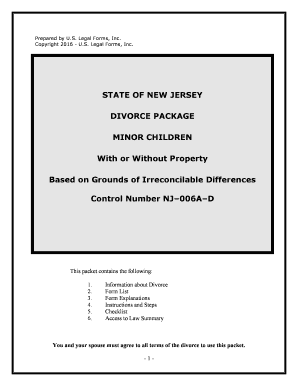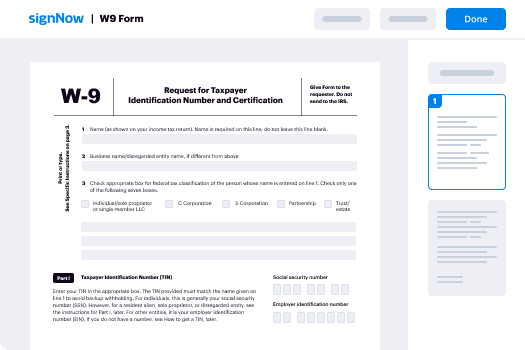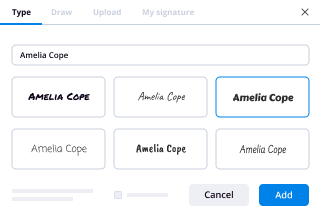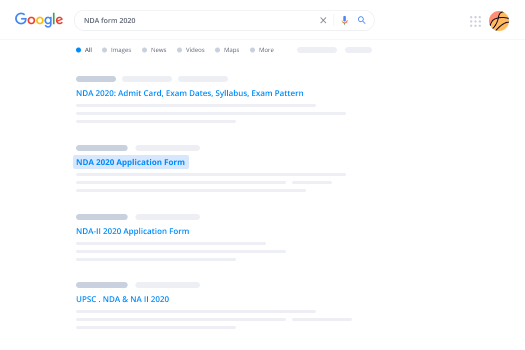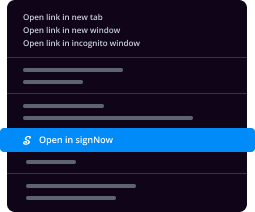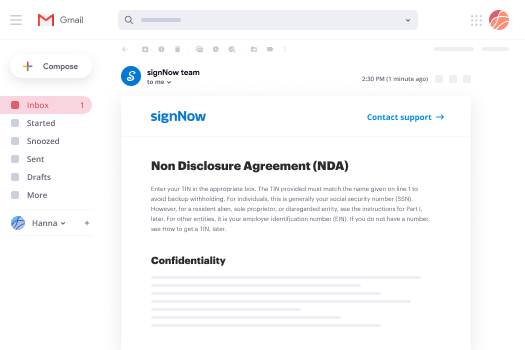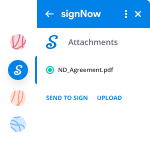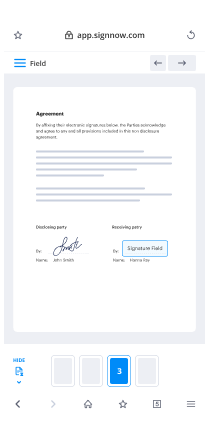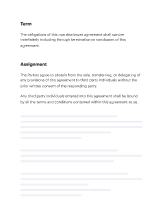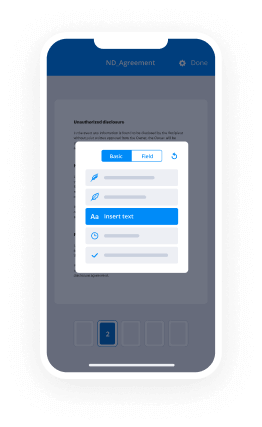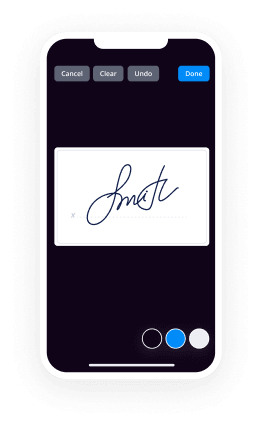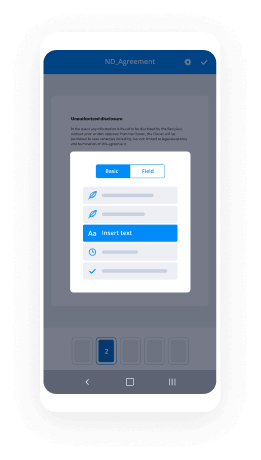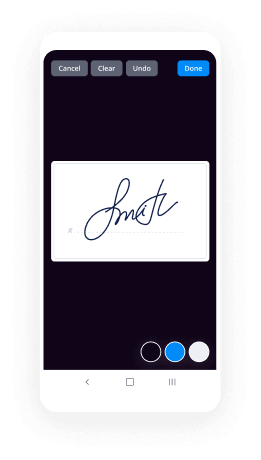Prepared by U.S. Legal Forms, Inc.
Copyright 2016 - U.S. Legal Forms, Inc.
STATE OF NEW JERSEY
DIVORCE PACKAGE
MINOR CHILDREN
With or Without Property
Based on Grounds of Irreconcilable Differences
Control Number NJ–006A–D
This packet contains the following:
1.
2.
3.
4.
5.
6.
Information about Divorce
Form List
Form Explanations
Instructions and Steps
Checklist
Access to Law Summary
You and your spouse must agree to all terms of the divorce to use this packet.
-1-
�-2-
�INFORMATION ABOUT DIVORCE
1.
WHO MAY USE THESE FORMS: This packet is for the sole purpose of obtaining an
uncontested divorce based on irreconcilable differences. This packet is only of use to
you if you and your spouse are willing to agree to all the terms and conditions of your
divorce. You must work and communicate with your spouse and keep him or her advised
as to each step in the process. If you cannot agree, you will become involved in a
contested divorce, which is beyond the scope of this packet. To use this divorce package
to file for divorce in New Jersey, all of the following must be true:
(a)
(b)
(c)
(d)
2.
At least one of the parties to the divorce action must be a resident of the
State of New Jersey for at least one year prior to the filing of the divorce
action.
You and your spouse must agree to all of the terms of division of those
assets/property in the Separation and Property Settlement Agreement.
There are minor children of the marriage and you and your spouse agree to
share the parenting responsibilities;
Irreconcilable differences that have caused the breakdown of your
marriage for a period of six (6) months must exist and make it appear that
your marriage should be dissolved and there is no reasonable prospect of
reconciliation.
THE BASICS: In a typical divorce, you must satisfy two basic requirements before you
can file for divorce. Those requirements include the residency requirements and
appropriate grounds for divorce. These requirements are discussed in detail in their
respective sections, below.
In addition, you must agree with your spouse to become divorced, and agree to all the
terms of the dissolution of marriage in filling out the forms, including property division.
You will complete and file the forms (see detailed instructions, below) in the Superior
Court, Chancery Division, Family Part. NJSA 2A:34-8
The proper place to file an action for divorce shall be the county in which the plaintiff
resides at the time the cause of action arose, or, if the plaintiff does not reside in New
Jersey, then the county in which the defendant resides at the time the cause of action
arose. If neither party was domiciled in New Jersey at the time the cause of action arose,
then the proper venue is the county where the plaintiff is domiciled when the action is
commence, or, if the plaintiff is not domiciled in new Jersey, then the county where the
defendant is domiciled when service of process is made. NJSA 2A:34-10
3.
RESIDENCY REQUIREMENTS: In order to file a no-fault divorce in the State of
New Jersey, at least one of the parties to the divorce must have been a bona fide resident
-3-
�of the State of New Jersey for a period of at least one year prior to the filing of the action.
NJSA 2A:34-10
4.
GROUNDS FOR DIVORCE: Irreconcilable differences is the no-fault ground for
divorce used by this packet. Irreconcilable differences is a no-fault ground for divorce in
New Jersey, provided that the irreconcilable differences have existed for six months
which make it appear that the marriage should be dissolved and there is no reasonable
prospect of reconciliation. NJSA 2A:34-2
Additional grounds for divorce are as follows:
1.
Adultery;
2.
Willful and continued desertion for one year;
3.
Extreme cruelty;
4.
Drug/alcohol addiction;
5.
Institutionalization for mental illness for 2 or more years;
6.
Imprisonment for 18 months or more;
7.
Deviant sexual behavior; and
8. Living separate and apart for a period of at least 18 or more consecutive months.
NJSA 2A:34.2
5.
LEGAL SEPARATION (“DIVORCE FROM BED AND BOARD”): A “legal
separation” in New Jersey is known as a “divorce from bed and board. A “divorce from
bed and board” is a court determination of the rights and responsibilities of a husband and
wife arising out of the marital relationship. A decree of “divorce from bed and board”
does not terminate the marital status of the parties. See, NJSA 2A:34-3 if you are
interested in more information on “divorce from bed and board.”
ATTENTION: This divorce package DOES NOT include forms for a "divorce from
bed and board”.
6.
DISTRIBUTION OF PROPERTY: In a divorce, the property such as land, house,
buildings, and items of personal property owned by the couple is divided between the
parties. Debts owed are also allocated to one party or the other, or both. This is
accomplished by means of a Separation and Property Settlement Agreement. You and
your spouse must agree to the property and debt division and memorialize your
agreement in the Separation and Property Settlement Agreement, which will be
-4-
�incorporated by reference into the Judgment of Divorce that ultimately ends your
marriage. You may agree to divide the property any way you like, as long as a basic
fairness is maintained, and you both agree. If you cannot agree on any item of this
division, the dissolution of marriage transforms into a contested divorce. A contested
divorce is beyond the scope of this packet.
7.
ALIMONY/MAINTENANCE: In all actions brought for divorce, divorce from bed and
board, or nullity the court may award one or more of the following types of alimony to
either party:
(a)
Permanent alimony;
(b)
Rehabilitative alimony;
(c)
Limited duration alimony; or,
(d)
Reimbursement alimony.
In so doing the court shall consider, but not be limited to, the following factors:
(a)
The actual need and ability of the parties to pay;
(b)
The duration of the marriage;
(c)
The age, physical and emotional health of the parties;
(d)
The standard of living established in the marriage and the likelihood that
each party can maintain a reasonably comparable standard of living;
(e)
The earning capacities, educational levels, vocational skills, and
employability of the parties;
(f)
The length of absence from the job market of the party seeking
maintenance;
(g)
The parental responsibilities for the children;
(h)
The time and expense necessary to acquire sufficient education or training
to enable the party seeking maintenance to find appropriate employment,
the availability of the training and employment, and the opportunity for
future acquisitions of capital assets and income;
-5-
�8.
(i)
The history of the financial or non-financial contributions to the marriage
by each party including contributions to the care and education of the
children and interruption of personal careers or educational opportunities;
(j)
The equitable distribution of property ordered and any payouts on
equitable distribution, directly or indirectly, out of current income, to the
extent this consideration is reasonable, just and fair;
(k)
The income available to either party through investment of any assets held
by that party;
(l)
The tax treatment and consequences to both parties of any alimony award,
including the designation of all or a portion of the payment as a nontaxable payment; and
(m)
Any other factors which the court may deem relevant.
CUSTODY/VISITATION: The State of New Jersey has found that it is in the best
interests of all parties to a divorce action to assure minor children of frequent and
continuing contact with both parents after the parents have separated or dissolved their
marriage and that it is in the public interest to encourage parents to share the rights and
responsibilities of child rearing in order to effect this policy.
In any proceeding involving the custody of a minor child, the rights of both parents shall
be equal and the court shall enter an order which may include:
(n)
Joint custody of a minor child to both parents, which is comprised of legal
custody or physical custody which shall include:
i.
Provisions for residential arrangements so that a child shall reside
either solely with one parent or alternatively with each parent in
accordance with the needs of the parents and the child; and
ii.
Provisions for consultation between the parents in making major
decisions regarding the child's health, education and general
welfare;
(o)
Sole custody to one parent with appropriate parenting time for the
noncustodial parent; or
(p)
Any other custody arrangement as the court may determine to be in the
best interests of the child.
In making an award of custody, the court shall consider but not be limited to the
following factors:
-6-
�(a)
The parents' ability to agree, communicate and cooperate in matters
relating to the child;
(b)
The parents' willingness to accept custody and any history of
unwillingness to allow parenting time not based on substantiated abuse;
(c)
The interaction and relationship of the child with its parents and siblings;
(d)
The history of domestic violence, if any;
(e)
The safety of the child and the safety of either parent from physical abuse
by the other parent;
(f)
The preference of the child when of sufficient age and capacity to reason
so as to form an intelligent decision;
(g)
The needs of the child;
(h)
The stability of the home environment offered;
(i)
The quality and continuity of the child's education;
(j)
The fitness of the parents;
(k)
The geographical proximity of the parents' homes;
(l)
The extent and quality of the time spent with the child prior to or
subsequent to the separation;
(m)
The parents' employment responsibilities; and,
(n)
The age and number of the children.
A parent shall not be deemed unfit unless the parents' conduct has a substantial adverse
effect on the child.
The court shall order any custody arrangement which is agreed to by both parents unless
it is contrary to the best interests of the child. In any case in which the parents cannot
agree to a custody arrangement, the court may require each parent to submit a custody
plan which the court shall consider in awarding custody.
The court shall specifically place on the record the factors which justify any custody
arrangement not agreed to by both parents. 9:2-4.
-7-
�This package is based upon a shared custodial arrangement for all minor children
of the marriage.
9.
CHILD SUPPORT: In determining the amount to be paid by a parent for support of the
child and the period during which the duty of support is owed, the court shall consider,
but not be limited to, the following factors:
(a)
Needs of the child;
(b)
Standard of living and economic circumstances of each parent;
(c)
All sources of income and assets of each parent;
(d)
Earning ability of each parent, including educational background, training,
employment skills, work experience, custodial responsibility for children
including the cost of providing child care and the length of time and cost
of each parent to obtain training or experience for appropriate
employment;
(e)
Need and capacity of the child for education, including higher education;
(f)
Age and health of the child and each parent;
(g)
Income, assets and earning ability of the child;
(h)
Responsibility of the parents for the court-ordered support of others;
(i)
Reasonable debts and liabilities of each child and parent; and
(j)
Any other factors the court may deem relevant. 2A:34-23
All orders that include child support shall be paid through immediate income withholding
from the obligor's current and future income unless the parties agree, in writing, to an
alternative arrangement or either party shows, and the court finds, good cause for an
alternative arrangement.
The court shall forward the order to the Probation Division, which shall prepare and send
a Notice to Payor of Income Withholding to the obligor's employer or other source of
income. RULE 5:7-5
10.
PARENT'S EDUCATION PROGRAM: The State of New Jersey has established a
mandatory education program to be known as the "Parents' Education Program." The
purpose of the program is to promote cooperation between the parties and to assist
-8-
�parents in resolving issues which may arise during the divorce or separation process,
including, but not limited to:
(a)
Understanding the legal process and cost of divorce or separation,
including arbitration and mediation;
(b)
Understanding the financial responsibilities for the children;
(c)
Understanding the interaction between parent and child, the family
relationship and any other areas of adjustment and concern during the
process of divorce or separation;
(d)
Understanding how children react to divorce or separation, how to spot
problems, what to tell them about divorce or separation, how to keep
communication open and how to answer questions and concerns the
children may have about the process;
(e)
Understanding how parents can help their children during the divorce or
separation, specific strategies, ideas, tools, and resources for assistance;
(f)
Understanding how parents can help children after the divorce or
separation and how to deal with new family structures and different sets of
rules; and
(g)
Understanding that cooperation may sometimes be inappropriate in cases
of domestic violence. 2A:34-12.3
The court shall order every person who has filed an action for divorce, nullity or separate
maintenance where the custody, visitation or support of the minor child is an issue to
complete the program prior to entry of judgment. Failure of a party to participate in the
program shall be considered as a factor by the court in making any custody and visitation
determinations. Each party shall attend separate sessions of the program.
The court may exempt a party from attending the program only if the court finds good
cause for an exemption.
The court shall not refer a party to the program if a temporary or final order restraining
either party from contact with the other has been issued pursuant to the "Prevention of
Domestic Violence Act of 1991”, or if either party is restrained from contact with the
other party, or a child of the other party, under the criminal or civil laws of this or any
other state. 2A:34-12.5
11.
NAME CHANGE: The court, upon or after granting a divorce, may allow either party
to the marriage to resume any name used by the party prior to the marriage. NJSA 2A:3421
-9-
�FORMS LIST
This packet contains the following forms:
1.
Complaint for Divorce Based on Irreconcilable Differences (NJ-816D)
2.
Summons (NJ-808D)
3.
Certification of Verification and Non-Collusion (NJ-805D)
4.
Affidavit of Insurance Coverage (NJ-806D)
5.
Non-Military Affidavit (NJ-807D)
6.
Family Part Case Information Statement (NJ-4-36-2)
7.
Waiver of Process and Entry of Appearance (NJ-809D)
8.
Acknowledgment of Service (NJ-KB-001)
9.
Shared Custody Child Support Worksheet (NJ-813D)
10.
Separation and Property Settlement Agreement (NJ-DO-11A)
11.
Request and Notice of Default Uncontested Hearing Based on
Irreconcilable Differences (NJ-817D)
12.
Final Judgment of Divorce (NJ-811D)
13.
Civil Action Rule 5:4-2(h) Certification By Self-Represented Litigant (NJFDF-10889)
14.
Confidential Litigant Information Sheet (R. 5:4-2(g)) (NJ-FDF-10486)
- 10 -
�FORM EXPLANATIONS
All forms included in this package are identified below. You must sign all documents with a
space for signature of a Notary Public in front of a Notary Public.
1.
Complaint for Divorce Based on Irreconcilable Differences (NJ-816D) – The
Complaint for Divorce Based on Irreconcilable Differences is the document in which you
are asking the court to grant your divorce along with any other relief requested.
2.
Summons (NJ-808D) – This document is the official notification to your spouse that the
divorce suit has been filed. It contains various languages regarding appearance in court,
time limits for filing answers, etc.
3.
Certification and Verification of Non-Collusion (NJ-805D) – This form contains your
promise that the Complaint and other papers are truthful and filed in good faith.
4.
Affidavit of Insurance Coverage (NJ-806D) – You must fill out this document with all
information regarding your insurance coverage.
5.
Non-Military Affidavit (NJ-807D) – This document is used by the Plaintiff to certify
that the Defendant is not on active duty with any branch of the U.S. Armed Forces.
6.
Family Part Case Information Statement (NJ-4-36-2) – This is an official information
document for the court’s files. You may be required to file this when filing your
Complaint and other initial documents.
7.
Waiver of Process and Entry of Appearance (NJ-809D) – This document must be
signed by your spouse and returned to you for filing. In this form, your spouse
acknowledges receipt of the Complaint and Summons, waives further service of process,
and consents to the entry of a Final Judgment of Divorce in accordance with the agreed
Separation and Property Settlement Agreement.
8.
Acknowledgment of Service (NJ0KB-001) – This document is used if there is an issue
over proper service of process. A general appearance or an acceptance of the service of
a summons, signed by the defendant's attorney or signed and acknowledged by the
defendant (other than an infant or mentally incapacitated person), shall have the same
effect as if the defendant had been properly served.
- 11 -
�9.
Shared Custody Child Support Worksheet (NJ-813D) – This worksheet is used to
determine the correct amount of child support to be paid when the parties are to share
custody of minor children of the marriage.
10.
Separation and Property Settlement Agreement (NJ-D0-11A) – This form is a
contract in which you and your spouse agree to the division of all your property and
debts. If approved by the Judge, it will be incorporated into the Final Judgment of
Divorce.
11.
Request and Notice of Default Uncontested Hearing Based on Irreconcilable
Differences (Notice of Uncontested Hearing) (NJ-817D) - This form is used to notify
the Defendant of the hearing date. This is the date you will present the Judgment to the
Court. Don’t be confused by the term “default”. It is really a notice of uncontested
hearing and is used for that purpose.
12.
Final Judgment of Divorce (NJ-811D) – The final statement of the legalities and terms
of your divorce, which incorporates your agreed-upon Separation Agreement. Once this
form is signed by the Judge and filed with the court, your divorce is complete. You must
mail a certified copy of the signed, filed copy of the Final Judgment to your spouse.
13.
Civil Action Rule 5:4-2(h) Certification By Self-Represented Litigant (NJ-FDF10889) – This form is a certification that the plaintiff or defendant has read the document
entitled “Divorce- Dispute Resolution Alternatives to Conventional Litigation,” and is
informed as to the availability of complementary dispute resolution alternatives to
conventional litigation.
14.
Confidential Litigant Information Sheet (R. 5:4-2(g)) (NJ-FDF-10486) – This form is
used to maintain the confidentiality of a plaintiff’s or defendant’s personal information,
including name, social security number, date and place of birth, driver’s license number,
address, phone number, and information relating to children, healthcare, employment and
vehicles. This information shall be used for the sole purposes of establishing, modifying,
and enforcing support orders.
- 12 -
�INSTRUCTIONS AND STEPS
Note: If a form contains a space for the signature of a Notary Public, it must be signed by you
(and if necessary by your spouse) in front of a Notary Public, who must notarize the document.
Prepare an original and several copies of each of your completed documents. Your spouse
should have a copy of everything you file, stamped “filed” by the clerk. You should keep copies
and the court must have originals.
STEP 1:
Complete the following forms:
Complaint for Divorce Based on Irreconcilable Differences (NJ816D)
Summons (NJ-808D)
Certification and Verification of Non-Collusion (NJ-805D)
Affidavit of Insurance Coverage (NJ-806D)
Non-Military Affidavit (NJ-807D)
Family Part Case Information Statement (NJ-4-36-2)
Civil Action Rule 5:4-2(h) Certification By Self-Represented
Litigant (NJ-FDF-10889) (This form should be annexed to Form
1)
Confidential Litigant Information Sheet (R. 5:4-2(g)) (NJ-FDF10486)
Be sure to complete all sections of the forms and sign the forms. Some forms
need to be signed in front of a notary public. These forms will have a notary
section on the form.
STEP 2:
Make three copies of the completed forms and file with the court clerk. Pay filing
fees. Keep several stamped “filed” copies of these forms. The clerk is a valuable
resource to you, and can often answer your questions about filing documents,
timing, and the mechanics of the divorce process. It must be noted, however, that
the Clerk can not provide legal advice.
Even though the Defendant will sign a Waiver of Process and Entry of
Appearance (NJ-809D), a Summons (NJ-808D) must be served. Ask the Clerk for
the procedure to be used to server the Defendant.
As an alternative, instruct your spouse, by phone, letter or otherwise, to complete
and sign one copy of Form 8: Acknowledgment of Service (NJ-KB-001), if service
of the summons and complaint was attempted by personal or constructive service
(in hand or mail, etc.) Your spouse should keep the other documents for his or her
files.
- 13 -
�STEP 3:
Your spouse will be served with the Summons (NJ-808D) and Complaint (NJ-816
D). You should also mail or deliver the following forms to your spouse.
Stamped “filed” copies of the forms you filed with the Clerk.
Waiver of Process and Entry of Appearance (NJ-809D)
Affidavit of Insurance Coverage (NJ-806D)
Instruct your spouse, by phone, letter or otherwise, to complete and sign one copy
of the Waiver of Process and Entry of Appearance (NJ-809D) and Affidavit of
Insurance Coverage (NJ-806D) and return them to you. Your spouse should
keep the other documents for his or her files.
STEP 4:
Once your spouse has returned the Waiver of Process and Entry of Appearance
(NJ-809D) and Affidavit of Insurance Coverage (NJ-806D), you must FILE them
with the clerk. There may be a filing fee required in addition to the fee paid when
the Complaint was filed.
STEP 5:
The Shared Custody Child Support Worksheet (NJ-813D) should next be
completed and filed, using the most current financial information from both
parties in determining the correct amount of child support to be paid. It is
important to note that this worksheet is only for use by parties who have reached
an agreement regarding the custodial arraignments for the minor children. If the
parties have not reached an agreement, or, if the custodial agreement is not a
shared custody arraignment, this worksheet cannot be used. Once completed, file
this document with the Clerk of Court.
STEP 6:
Both parties should jointly complete the Separation and Property Settlement
Agreement (NJ-DO-11A), making certain both parties agree to all of the terms
contained therein.
STEP 7:
The Parents’ Education Program should next be attended by both parties.
STEP 8:
The Final Judgment of Divorce (NJ-811D) should next be completed by the
parties.
STEP 9:
Next contact the Clerk for a hearing date on the Complaint (NJ-816D) and the
Clerk will provide you with a date to present the Judgment (NJ-811D). Complete
- 14 -
�the Request and Notice of Default Hearing (NJ-817D) and mail a copy to the
Defendant advising the defendant of the hearing date.
STEP 10:
Attach the Separation and Property Settlement Agreement (NJ-DO-11A) to the
Judgment (NJ-811D), and make sure you have the original and three copies.
Attend the hearing and answer any questions from the Court and then present the
Judgment (NJ-811D) with agreement attached to the Court. Both parties should
attend this hearing in order to simplify the process. However, the Plaintiff must
attend the hearing.
STEP 11:
Once you receive the Final Judgment of Divorce (NJ-811D) signed by the Judge,
you must FILE it with the Court Clerk
STEP 12:
Obtain several certified copies of the Judgment (NJ-811D) and deliver or mail one
copy to you now ex-spouse.
Notes:
Additional forms may be required in your County but these additional forms will
be provided by the Clerk. For example, you may be required to complete a
statistical information form or certificate of divorce.
A civil cover sheet may also be required and is available from the Clerk.
- 15 -
�CHECKLIST
Complaint for Divorce Based on Irreconcilable Differences (NJ-816D), Summons
(NJ-808D), Certification and Verification of Non-Collusion (NJ-805D), Affidavit
of Insurance Coverage (NJ-806D), Non-Military Affidavit (NJ-807D), Family
Part Case Information Statement (NJ-4-36-2), Civil Action Rule 5:4-2(h)
Certification By Self-Represented Litigant (NJ-FDF-10889) and Confidential
Litigant Information Sheet (R. 5:4-2(g)) (NJ-FDF-10486) completed.
Three copies of above-listed forms made and originals filed with Clerk of Court.
Summons issued by Clerk and Defendant served with above-listed forms.
Defendant also provided with Waiver of Process and Entry of Appearance (NJ809D) and Affidavit of Insurance Coverage (NJ-806D).
Defendant completes Waiver of Process and Entry of Appearance (NJ-809D) and
Affidavit of Insurance Coverage (NJ-806D) and returns them to you for filing.
Once your spouse has returned Form 7 or 8, you must FILE it with the clerk.
There may be a filing fee required in addition to the fee paid when the Complaint
was filed.
Shared Custody Child Support Worksheet (NJ-813D) completed and filed.
Separation Agreement (NJ-DO-11A) completed by both parties.
Parenting Education Program attended by both parties.
Final Judgment of Divorce (NJ-811D) completed by both parties
Request and Notice of Default Hearing (NJ-817D) completed and filed. Hearing
date obtained. Notice of date of final hearing sent to Defendant.
Final hearing attended. Judgment (NJ-811D) with Settlement Agreement (NJ-DO11A) attached provided to Court for review.
Final Judgment (NJ-811D) signed by Judge and filed with Clerk.
Copy of filed Judgment (NJ-811D) provided to Defendant.
- 16 -
�NOTE ABOUT COMPLETING THE FORMS
The forms in this packet may contain “form fields” created using Microsoft Word. “Form fields”
facilitate completion of the forms using your computer. They do not limit you ability to print the
form “in blank” and complete with a typewriter or by hand.
If you do not see the gray shaded form fields, go the View menu, click on Toolbars, and then
select Forms. This will open the forms toolbar. Look for the button on the forms toolbar that
resembles a shaded letter “a”. Click in this button and the form fields will be visible. If they do
not become visible, then they were not included in this form package.
If you need to make any changes in the body of the form, it is necessary for you “unlock” or
“unprotect” the form. IF YOU INTEND TO MAKE CHANGES TO THE CONTENT, DO
SO BEFORE YOU BEGIN TO FILL IN THE FIELDS. IF YOU UNLOCK THE
DOCUMENT AFTER YOU HAVE BEGUN TO COMPLETE THE FIELDS, WHEN
YOU RELOCK, ALL INFORMATION YOU ENTERED WILL BE LOST. To unlock,
click on “Tools” in the Menu bar and then selecting “unprotect document”. You may then be
prompted to enter a password. If so, the password is “uslf”. That is uslf in lower case letters
without the quotation marks. After you make the changes relock the document before you
begin to complete the fields.
After any required changes and re-protecting the document, click on the first form field and enter
the required information. You will be able to navigate through the document from form field to
form field using your tab key. Tab to a form field and insert your data. If you experience
problems, please let us know.
- 17 -
�LAW SUMMARY
You may access the law summary for your State by using the link below:
http://lawdigest.uslegal.com/divorce/state-law-summary/3752/
- 18 -
�DISCLAIMER
These materials were developed by U.S. Legal Forms, Inc. based upon statutes and forms for the
subject state. All Information and Forms are subject to this Disclaimer: All forms in this
package are provided without any warranty, express or implied, as to their legal effect and
completeness. Please use at your own risk. If you have a serious legal problem we suggest that
you consult an attorney. U.S. Legal Forms, Inc. does not provide legal advice. The products
offered by U.S. Legal Forms (USLF) are not a substitute for the advice of an attorney.
THESE MATERIALS ARE PROVIDED "AS IS" WITHOUT ANY EXPRESS OR IMPLIED
WARRANTY OF ANY KIND INCLUDING WARRANTIES OF MERCHANTABILITY,
NONINFRINGEMENT OF INTELLECTUAL PROPERTY, OR FITNESS FOR ANY
PARTICULAR PURPOSE. IN NO EVENT SHALL U. S. LEGAL FORMS, INC. OR ITS
AGENTS OR OFFICERS BE LIABLE FOR ANY DAMAGES WHATSOEVER
(INCLUDING, WITHOUT LIMITATION DAMAGES FOR LOSS OF PROFITS, BUSINESS
INTERRUPTION, LOSS OF INFORMATION) ARISING OUT OF THE USE OF OR
INABILITY TO USE THE MATERIALS, EVEN IF U.S. LEGAL FORMS, INC. HAS BEEN
ADVISED OF THE POSSIBILITY OF SUCH DAMAGES.
THESE FORMS WERE PREPARED FOR STATEWIDE USE. HOWEVER, SOME
COUNTIES OR JUDGES MAY REQUIRE CERTAIN MODIFICATIONS TO THE FORMS
FOR USE IN YOUR PARTICULAR COUNTY AND MAY REQUIRE SPECIAL FORMS
NOT INCLUDED. CHANGES REQUIRED BY PARTICULAR JUDGES ARE NOT
UNCOMMON EVEN IF THE FORMS HAD BEEN PREPARED BY YOUR ATTORNEY.
REGARDLESS, YOU SHOULD BE ABLE TO USE THESE FORMS AND INSTRUCTIONS,
WITH ANY REQUIRED MODIFICATIONS, TO MAKE IT THROUGH THE PROCESS. IF
YOU NEED TO MAKE CHANGES, OR IF SPECIAL FORMS ARE REQUIRED IN YOUR
COUNTY, YOU CAN MAKE THE CHANGES AND REFILE, OR OBTAIN THE SPECIAL
FORMS EITHER FROM THE CLERK OR A CLOSED DIVORCE FILE WHICH YOU CAN
USE AS AN EXAMPLE.
- 13 -
�
